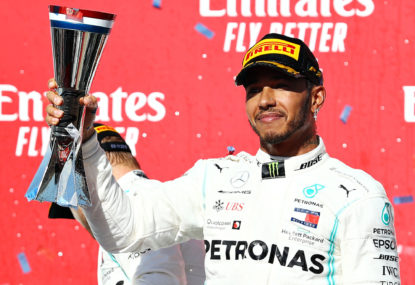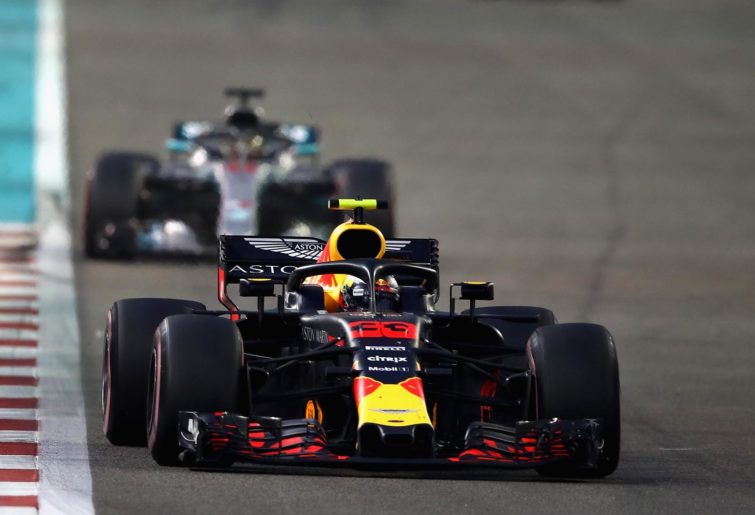Chinese Grand Prix talking points: Stroll has become the most hated F1 driver in a long time - but that's simply an unfair call!
The absolute vitriol against the Canadian that has come from the incident is beyond reprehensible.

As well as providing spectacular racing for the past 70 years, Formula One has also been at the pinnacle of innovation for global motorsport and the wider automotive industry.
Though the times, they are a changing and the glory days of throwing blank checks at insane research and development to extract vital tenths of a second, will soon be at an end for Formula One. The sport will have to evolve into a sustainable entity, or risk complete collapse.
Whilst currently in a global pandemic and racing being suspended, Formula One is suffering financially – as is any industry affected by the impacts of COVID-19. In recent days, there has been confirmation that the legendary Williams team are undergoing a strategic review and looking to possibly sell or partially sell their outfit to ensure their survival – a thought that the heritage family constructor would’ve previously shuddered at.
McLaren across the board have been forced to cut jobs to prepare for the impending budget cap in the Formula One championship from 2021. While French manufacturer Renault also has assured that racing is still in their future, though it has come at the cost of 15,000 jobs worldwide, in the automaker’s bid to save two billion Euros in the next three years.
The silver lining in all this is that the sport’s owners outlined measures to ensure the future for Formula One, starting by bringing forward a further reduction in the performance operating budget for teams in 2021, from US$175 million to now US$145 million – with incremental reductions in the subsequent seasons.
Enforcing the cap on performance will not only make competing in Formula One more viable and sustainable for all parties, but also will work towards levelling out of the playing field create closer and more competitive racing – which has been heavily askew for a long time.
The major aerodynamic regulation changes have been delayed from their initial introduction in 2021, to the following year due to the effect of the pandemic. Though the budget cap will still be enforced next season, as well as a freeze any significant car development.
From a sporting perspective, there is no faulting that approach as it means the fans win and in the spirit of competition, teams that due to a lack of resources and finances that cannot normally fight for victory, can at last be in the mix on any given race weekend.

(Photo by Mark Thompson/Getty Images)
This will be further aided by the newly announced sliding scale for aerodynamics, which in essence is a handicap system – though without the contentiousness of Balance of Performance, which causes many a controversy in sportscar and GT racing.
Overall, there will be a reduction in ATPs (aero testing periods) for all teams, as operating a wind-tunnel has astronomical costs and teams currently are allowed a mighty 65 runs per week. Under the proposed sliding scale system next year, teams will be allocated ATPs based on their finishing order in the constructor’s championship from the previous season.
The team that wins the constructor’s championship in 2020 instead will only be allowed 90 per cent of the ATP runs for 2021, of which the base number will be 40 runs. There will be 2.5 per cent of that base amount added for each team in descending order of standings. The scale then in 2022 will shift between 70 per cent – 115 per cent with 5 per cent increments across the field in order of the constructor’s standings.
Essentially, even though it sounds like teams are going to be penalised for winning, the new system actually won’t tie one hand behind their back and will instead place more onus on the truly best teams still maximise their resources to win.
The cream will always rise to the top and the innovation will now be in evolving the way these powerhouse outfits do their research and development.
So, whether you’re a major manufacturer team like Mercedes or a privateer punching above its weight like Racing Point, having the best car will no longer be about who’s got the biggest chequebook.
There is the debate against evening out the field this way and introducing the use of standardised components, in that it goes against ‘the DNA of Formula One’. If Formula One is ultimately the pinnacle of innovation in motorsport, then this is next step in its evolution due to what the current global climate demands – thus ensuring the sport can survive into the future.
What the average fan can’t see on the car when trackside or viewing from home, will be deemed as obsolete and an area for which teams can drastically cut costs, by instead standardising or sharing parts between each other.
Already the target was set by Formula One to become completely carbon neutral by 2030 and there has been increased marketability of the hybrid power-units, which are already some of the most environmentally efficient in the world. Who’d have predicted an old dinosaur do ever do that? Said firmly with tongue in cheek.
It was only inevitable that this would be the path that the sport would take, though the ongoing pandemic has only given Formula One’s governing bodies the push to bring forward these changes and leave the ultimatum of adapting to survive and prosper or perish altogether.